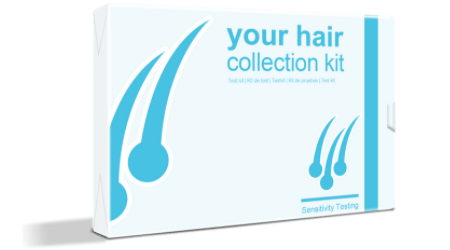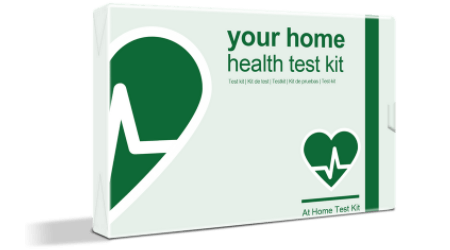Having food rich in potassium in your body ensures you don’t suffer from a deficiency. Potassium is an essential micronutrient and electrolyte your body needs to transport nutrients into your cells, maintain normal blood pressure, and support healthy nerve and muscle function. So, it’s generally an essential micronutrient to have.
Your body can’t produce potassium, so you must get it from your diet or in other ways that involve ingesting it. This vitamin has to be in the food you consume daily to ensure you get sufficient amounts. However, most people need more in their diets.
Many vegetables and fruits are amazing sources of this vitamin and can aid you in meeting your daily value. The average adult needs about 3400 milligrams of potassium daily for men and 2600 milligrams for women.
For the longest time, people have relied on bananas to offer potassium, and while bananas are a good source, there are many other food spices with this vitamin. Bananas can provide upto 422mg of potassium in a medium banana.
Potassium is often a nutrient that most people don’t think much about, and it tends to fly under the radar. Usually, this results in deficiencies, which we’re all trying to avoid. A diet that’s rich in potassium and low in sodium can reduce blood pressure and the risk of stroke.
10 foods rich in potassium
Besides bananas, many other foods in diets can increase potassium intake. These listed foods are rich in potassium vitamin and will ensure we evade suffering from potassium deficiencies. These include:
Potatoes
Potatoes are a great source of potassium. The best way to consume the maximum amount of potassium from potatoes is by baking them with the skin on since the skin contains more than 900 milligrams of potassium. However, there are wide varieties of potatoes (the main ones being white and sweet potatoes), and their potassium quantities depend on how they are grown and the soil they are cultivated in.
However, even though potatoes are a good source of the vitamin, there are ways of consuming them that don’t result in positive effects. For example, french fries lack nutrients and contain more added salt and oil from the frying. Typically, the high amounts of sodium in fries counteract the benefits of potassium.
Sweet potatoes are often used as a substitute for white potatoes. These are a good source of complex carbs, fibre, and a small amount of protein. These sweet potatoes are also a good source of vitamin A, a serving providing over 200% of its daily value.
A medium baked potato with skin on contains around 941mg of potassium, while a medium baked sweet potato contains 541mg.
Avocado
Avocado is a perfect source of healthy fats. This fruit is buttery and contains many nutrients, including heart-healthy monosaturated fats and vitamins C, E, and K. Half a cup of avocado contains around 364mg of potassium.
People with high blood pressure can benefit from this fruit as it contains less sodium and more potassium. There is also nearly 5 grams of fibre in a half-cup serving of avocado.
Lentils
Lentils are a legume that is high in fibre and rich in protein. A cup of cooked lentils contains around 731 mg of potassium. Lentils are primarily consumed in soups and stews. You can use the dry variety or canned lentils if you don’t have time. However, you must rinse off the canned lentils to remove excess sodium.
Leafy greens
These are the top most nutritious foods available. Leafy green vegetables have little calories and are rich in vitamins and minerals. Most leafy greens are rich in potassium. A cup of cooked spinach has 838mg, and a cup of cooked Swiss chard has 962 mg of potassium. Additionally, a cup of cooked amaranth has 846mg.
Besides all that, these vegetables have other benefits. Spinach is high in folate, vitamin K, vitamin A, and magnesium.
Fruit and vegetable juice
It’s common to ignore juices and prefer whole fruits because of the other benefits of fibre. However, you shouldn’t overlook the possibilities of whole fruit juice as it’s an easy way to increase your potassium intake.
Orange juice and pomegranate can provide around 500mg of potassium per cup. Carrot juice provides around 689mg, while prune juice has more than 700mg of the same per cup. Even though these are amazing, you must check your sugar consumption level when consuming fruit juice. You can also juice vegetables high in potassium for an easy way to meet your daily value.
Seafood
Fish and shellfish are good sources of omega-3 fatty acids. Common types of seafood like salmon, mackerel, halibut, tuna, and snapper contain more than 400mg of potassium in a 3-ounce fillet. Three ounces of clams can also give you over 500mg of potassium.
In addition, consuming more fatty fish like salmon and tuna contains omega-3 fatty acids, which can help reduce the risk of heart disease.
Dairy
Even though milk and other dairy products are known to be rich in calcium, they’re also a good source of potassium. A cup of yoghurt can give you more than 500mg of potassium. Besides that, yogurt will also give you beneficial probiotics and add protein to your diet.
On ther other hand, low-fat milk offers between 350 to 380 mg of potassium. Besides bananas, dairy is another easy way for most adults to get one’s daily potassium intake. Even though black coffee can provide you with some level of potassium, adding a creamer adds more potassium to your daily diet.
Tomatoes
Even though fresh tomatoes offer various benefits, consuming concentrated tomato products like tomato puree or juice is better to get more potassium. A medium fresh tomato contains around 292mg, while a cup of tomato juice contains 527mg. Meanwhile, half a cup of tomato puree contains 549mg of potassium.
Legumes
Other legumes besides lentils, like beans, chickpeas, and potassium, are various types of beans which vary in shape, colour, and size. Grains that contain more than 350mg of potassium per half a cup include Pinto beans, navy beans, lima beans and Great Northern beans. The best way to consume legumes is by soaking them overnight, fermenting them or sprouting them to ensure improvement in mineral absorption.
Dried apricots
Apricots are fruits that one may eat, dried or fresh. Half a cup of dry apricots offers around 1,101mg of potassium. This fruit also provides other benefits, including antioxidants and iron. When purchasing apricots, look for the ones without added sugar to consume them without getting negative health effects.
Final thoughts
A diet rich in legumes, dairy, fruits, and vegetables can help you easily get enough potassium. When looking for more potassium in your diet, limit the amount of sodium you consume for your health. While potassium supplements may work, most supplements restrict the amount of potassium in those supplements, so you’re better off getting this micronutrient from your diet.
When choosing your diet, you also need to know how different foods make your body feel. Food intolerances can cause you to have digestive symptoms after eating specific foods. Take an Intolerance Test to know which foods support your health and which worsen it.


